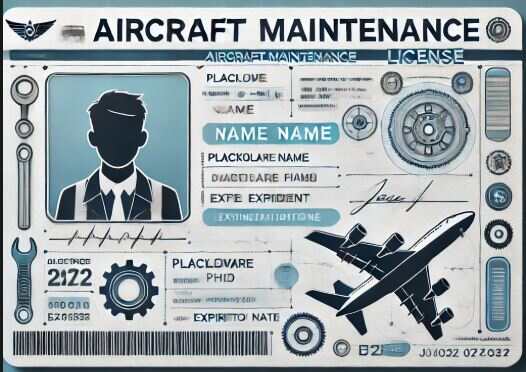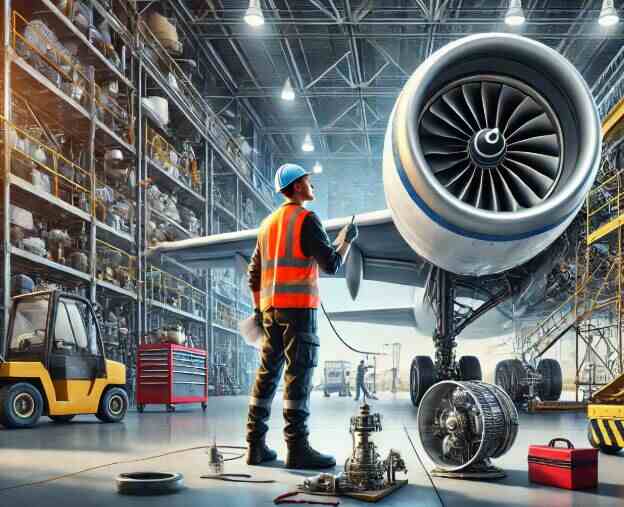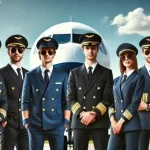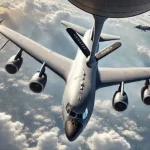Get a degree from anywhere and start working in an aircraft is not the concept of aviation. To work in an aircraft he/she has to obtain license by following some regulations of the competent authorities. Due to this factor and continual growth of the aviation industry, the demand for skilled professionals in aircraft maintenance is higher than ever. Hence, pursuing a successful career in this field is obtaining the right maintenance licenses.
In this article, we’ll explore the most in-demand aircraft maintenance licenses, the various career paths available for each, and the benefits they offer. Whether you’re just starting your career or looking to expand your qualifications, understanding these licenses can help you make informed decisions for your professional journey in aviation.
Types of Aircraft Maintenance Licenses

Aircraft maintenance is a critical part of aviation safety, requiring skilled and licensed professionals to ensure that aircraft remain airworthy. To perform maintenance tasks, individuals must acquire specific licenses that reflect their qualifications and areas of expertise. Here is an overview of the different types of aircraft maintenance licenses, based on industry standards.
Category A Licenses
Category A licenses are entry-level certifications that allow maintenance personnel to perform limited tasks. These tasks are predefined and typically performed under the supervision of more experienced personnel. Category A licenses are further divided into four subcategories based on the type of aircraft:
- A1: Aeroplanes with turbine engines (e.g., Airbus A320, Boeing 737).
- A2: Aeroplanes with piston engines (e.g., Cessna 172, Piper PA-28).
- A3: Helicopters with turbine engines (e.g., Sikorsky S-76, Airbus H125).
- A4: Helicopters with piston engines (e.g., Robinson R22, R44).
Category B1 Licenses
Category B1 licenses gives privileges to work on Mechanical systems like engine, airframe structure and associated components. These licenses permit the holder to perform and certify maintenance tasks and release aircraft back into service. The B1 category has some subcategories:
- B1.1: Aeroplanes with turbine engines (e.g., Boeing 747, Bombardier Q400).
- B1.2: Aeroplanes with piston engines (e.g., Beechcraft Baron, Mooney M20).
- B1.3: Helicopters with turbine engines (e.g., Bell 412, Leonardo AW139).
- B1.4: Helicopters with piston engines (e.g., Enstrom F-28, Schweizer 300).
Category B2 Licenses
Category B2 licenses cover avionics—the electronic systems used in aviation. These licenses allow maintenance professionals to work on communication, navigation, and other electronic systems across all types of aircraft. The B2 license applies to all aircraft, making it a versatile qualification for avionics specialists.
Category B2L Licenses
The B2L license is a specialized subset of the B2 license, excluding Group 1 aircraft as defined by regulatory guidelines. A B2L license focuses on specific ‘system ratings,’ and the holder must possess at least one of these ratings. The system ratings include:
- Communication/Navigation (Com/Nav)
- Instruments
- Autoflight
- Surveillance
- Airframe Systems
Category B3 Licenses
Category B3 licenses are designed for maintenance professionals working on light, piston-engine, non-pressurized aeroplanes with a Maximum Take-off Mass (MTOM) of 2,000 kg or below. This category is particularly relevant for small aircraft used in general aviation (e.g., Cirrus SR22, Diamond DA40).
Category L Licenses
Category L licenses cater to lighter aircraft and specialized vehicles, such as sailplanes and balloons. Subcategories of this licenses are as follows:
- L1C: Composite sailplanes (e.g., DG-1001).
- L1: Sailplanes (e.g., Schleicher ASW 28).
- L2C: Composite powered sailplanes and composite ELA1 aeroplanes (e.g., Pipistrel Panthera).
- L2: Powered sailplanes and ELA1 aeroplanes (e.g., Grob G109).
- L3H: Hot-air balloons (e.g., Cameron Balloons A-Series).
- L3G: Gas balloons.
- L4H: Hot-air airships.
- L4G: ELA2 gas airships.
- L5: Gas airships other than ELA2.
Category C Licenses
Category C licenses focus on certifying the airworthiness of an aircraft following base maintenance. This category is applicable to aeroplanes and helicopters and is usually held by professionals who oversee and certify maintenance work performed by other license holders.
Most demandable aircraft maintenance licenses in Aviation
The demand for licenses depends on the specific needs of the aviation industry, but some licenses are more frequently required:
- Category B1 Licenses: These are essential for mechanical maintenance, making them highly sought after for maintaining airframes and engines. Examples of applicable aircraft include Boeing 737, Airbus A350, and Bombardier CRJ series.
- Category B2 Licenses: With the increasing reliance on advanced avionics, B2 licenses are crucial for maintaining electronic systems. These are relevant for aircraft like the Boeing 787, Airbus A320neo, and Gulfstream G650.
- Category A Licenses: These entry-level licenses are often needed for routine maintenance and quick turnaround tasks, commonly used for aircraft such as Embraer E175 and ATR 72.
- Category C Licenses: These are vital for certifying the airworthiness of aircraft after maintenance, applicable to large fleet aircraft like the Boeing 777 and Airbus A330.
For smaller aircraft and general aviation, Category B3 Licenses are also highly relevant, particularly for models like the Cessna 182 or Piper Cherokee.
Which maintenance License Should You Gain According to Your Education?

The choice of aircraft maintenance license depends on your education and professional aspirations. Here are some general guidelines:
- Technical Education (Mechanical or Aeronautical Engineering):
- Recommended License: Category B1
- Reason: This license focuses on mechanical systems, including airframes and engines, which align well with your background. It allows you to work on various types of aircraft, such as turbine or piston-engine planes and helicopters.
- Electronics or Electrical Engineering Background:
- Recommended License: Category B2
- Reason: This license focuses on avionics, including communication, navigation, and electronic systems, making it a great fit if your studies have emphasized these areas.
- General Aviation Interest or Limited Resources:
- Recommended License: Category B3
- Reason: Ideal for working on light aircraft used in general aviation. It’s a good starting point if you’re looking to gain experience with smaller aircraft.
- Specialized Education in Lighter Aircraft (e.g., Balloons or Gliders):
- Recommended License: Category L
- Reason: This license is tailored for working on lighter, specialized aircraft, such as sailplanes or balloons, which might align with niche interests or education.
- Entry-Level Qualification:
- Recommended License: Category A
- Reason: If you’re just starting your aviation career or have a basic technical qualification, this license provides foundational access to the industry.
- Certifying Oversight Role:
- Recommended License: Category C
- Reason: If your education and experience include management or oversight, this license allows you to certify the airworthiness of aircraft after maintenance.
Which Maintenance License Path Offers the Best Career in Aviation?
The best license path depends on your career goals, but here are some general insights:
- Category B1 or B2 Licenses: These are the most versatile and in-demand licenses, offering opportunities to work on a variety of aircraft. They often lead to higher-paying roles and career advancement in both commercial and private aviation sectors.
- Category C License: This is ideal if you aspire to take on leadership or oversight roles, as it qualifies you to certify aircraft after maintenance.
- Category B3 License: While limited to smaller aircraft, this license can provide excellent opportunities in general aviation, charter services, and regional carriers.
- Specialized Licenses (Category L): These are suited for niche markets, such as ballooning or glider maintenance, and may offer unique career opportunities for enthusiasts in these areas.
Ultimately, pursuing a Category B1 or B2 license offers the broadest career prospects in aviation, particularly if paired with additional certifications and experience. Tailoring your choice to your interests and educational background will ensure a rewarding career in this dynamic field.
What Annual Salary Can One Expect by Pursuing These Licenses?
Salaries for licensed aircraft maintenance professionals vary based on the type of license, experience, and the region of employment. Here’s an overview of typical annual salaries:
- Category A License: Entry-level roles with a Category A license generally offer salaries between $30,000 and $50,000 annually, depending on the location and employer.
- Category B1 License: Professionals with a B1 license can expect salaries ranging from $50,000 to $90,000 annually. Those with significant experience or working on high-demand aircraft may earn more.
- Category B2 License: B2 license holders often earn slightly higher than B1, with salaries typically between $60,000 and $100,000 per year, reflecting the complexity of avionics work.
- Category B3 License: For those maintaining light aircraft, annual salaries range from $40,000 to $70,000, depending on experience and aircraft types.
- Category C License: These roles involve oversight responsibilities, with salaries often between $80,000 and $120,000, especially for those working with larger fleets or in managerial roles.
- Category L License: Salaries for specialized licenses vary widely. For example, maintaining sailplanes or balloons may yield $30,000 to $60,000, but niche expertise can increase earning potential.
High-demand regions and employers, such as major airlines or defense contractors, often offer higher compensation, along with benefits like health insurance, bonuses, and retirement plans.
Conclusion
The variety of aircraft maintenance licenses ensures that professionals are well-qualified to handle specific maintenance tasks across different types of aircraft. From entry-level Category A licenses to the specialized Category B2L and Category L licenses, these certifications play a crucial role in maintaining aviation safety and efficiency. Aspiring maintenance personnel can choose a license based on their area of interest, type of aircraft they wish to specialize in, and educational background.




1 thought on “In-Demand Aircraft Maintenance Licenses and Their Career Paths”
Comments are closed.